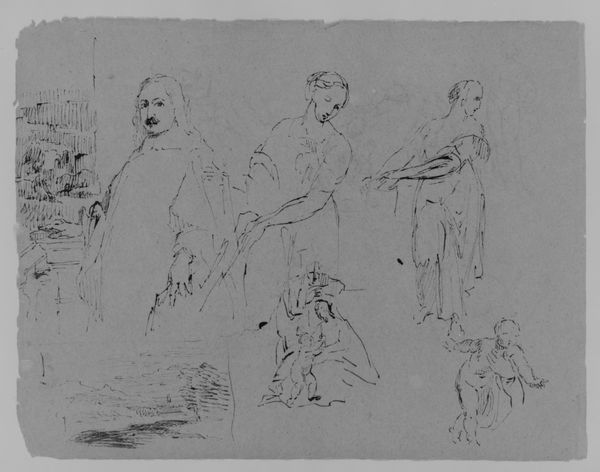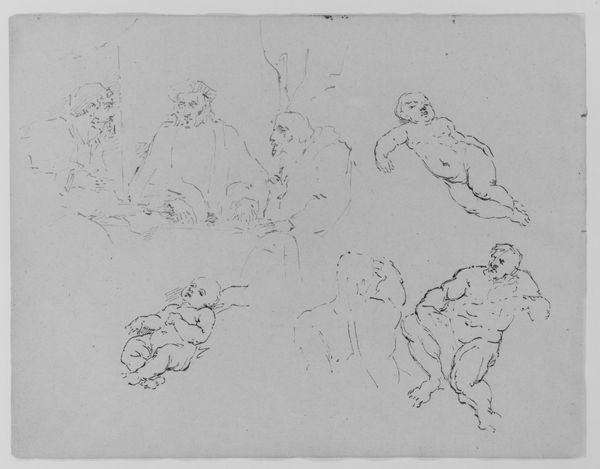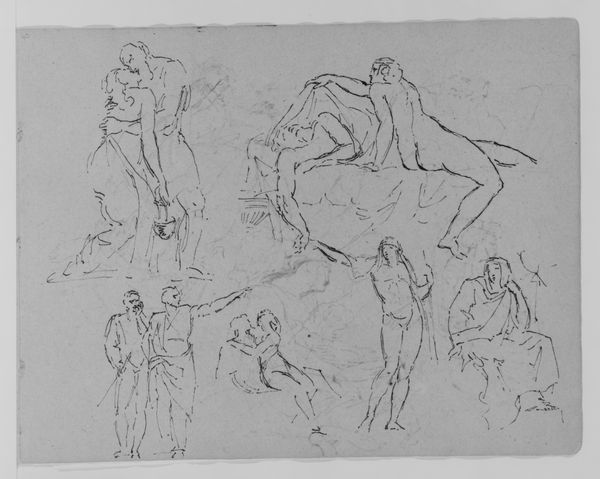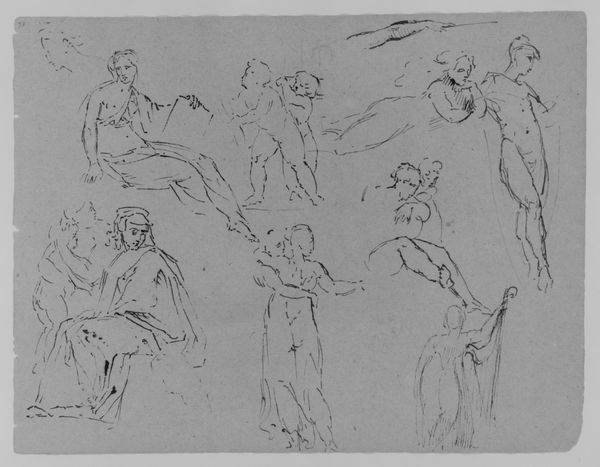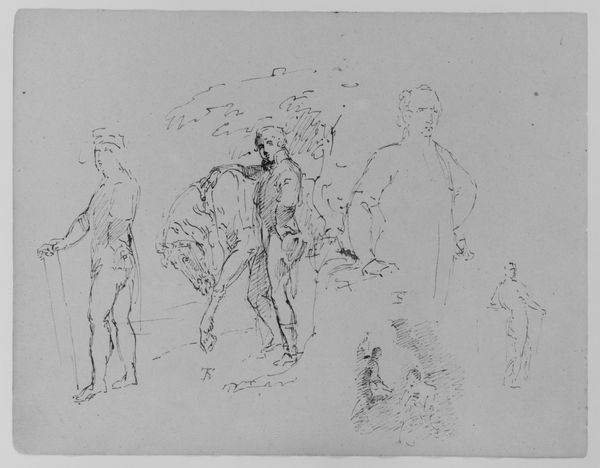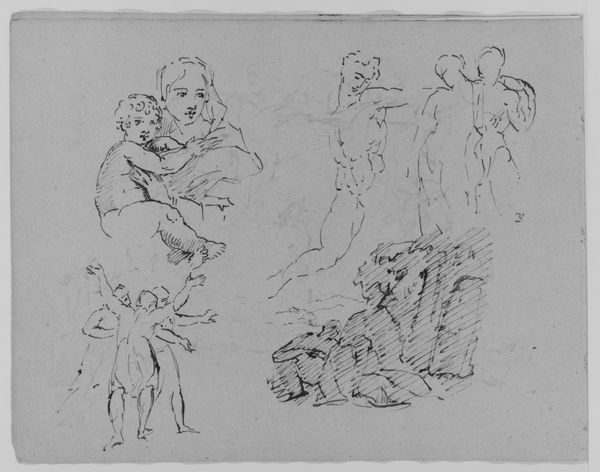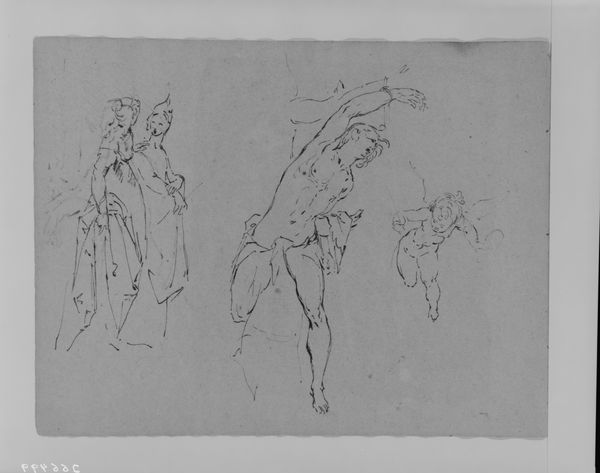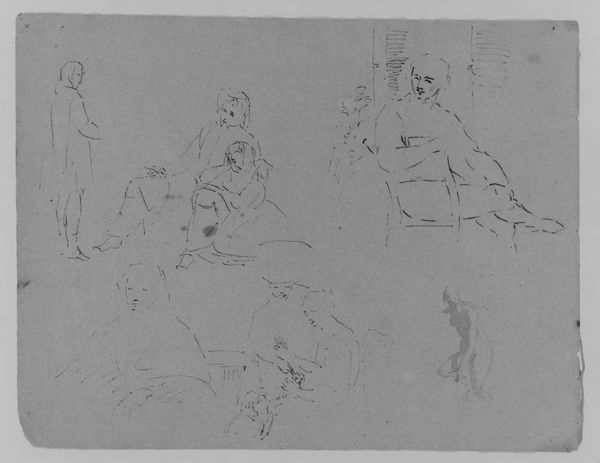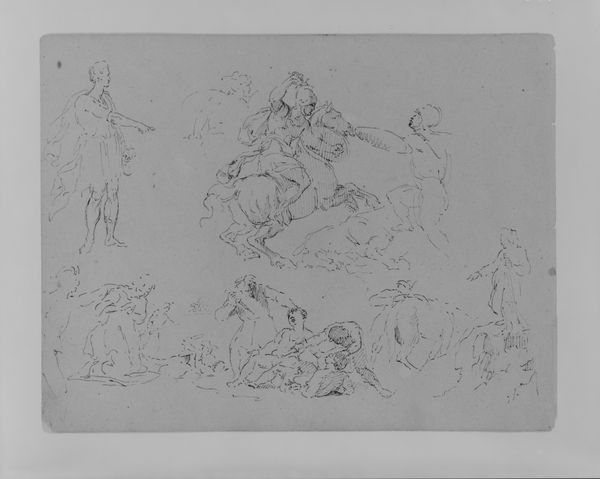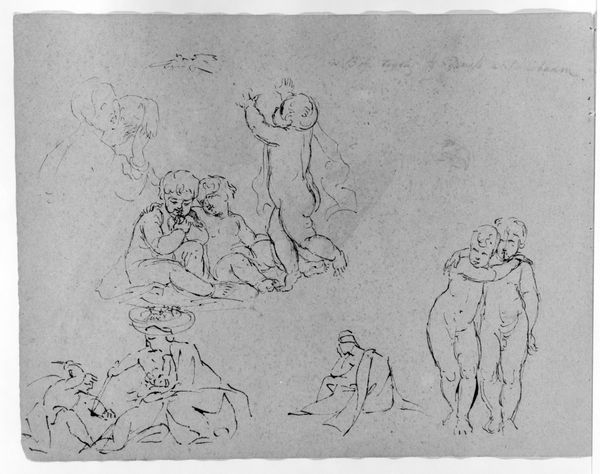
Unfinished Standing Classical Male Nude; Cardinal Bentivoglio after Van Dyke; Mother and Child; Equestrian Figure (from Sketchbook) 1810 - 1820
0:00
0:00
drawing, paper, ink
#
portrait
#
drawing
#
mother
#
pencil sketch
#
classical-realism
#
paper
#
ink
#
child
#
group-portraits
#
horse
#
sketchbook drawing
#
academic-art
#
nude
#
male-nude
Dimensions: 9 x 11 1/2 in. (22.9 x 29.2 cm)
Copyright: Public Domain
Editor: This is a sketchbook page by Thomas Sully, created between 1810 and 1820. It contains ink and graphite drawings of various figures, including a classical male nude, a mother and child, and an equestrian figure. The sketches feel very academic. What was the purpose of this kind of drawing for an artist like Sully? Curator: Well, these sketchbook studies offer a window into the artistic process of the time, deeply rooted in historical precedent and academic training. Sully, like many artists of his era, engaged with the "old masters," and we can see this in the reference to Van Dyck's "Cardinal Bentivoglio." The sketchbook, as a portable museum of sorts, facilitated the circulation and interpretation of established visual tropes and compositions. These pages demonstrate how artists learned through copying and adaptation, reinforcing the artistic hierarchy and solidifying a specific visual language. Editor: So, you’re saying it was less about original expression and more about participating in an established visual dialogue? Curator: Precisely. And think about the public role of art during this period. Artists aimed to elevate and educate. The focus on classical forms, the nude, and equestrian portraits reflected societal values of heroism, ideal beauty, and established power structures. These sketches would have been part of a larger process of artistic legitimization, a way of showing that one had mastered the visual language of the elite. Do you think this practice still occurs today? Editor: To some degree, yes, but now artists seem more inclined to critique those power structures rather than just reinforce them. I've always viewed sketchbooks as private spaces where the artist's unfiltered thoughts flow onto paper, but perhaps Sully’s sketches also reveal how even those personal spaces were shaped by cultural expectations. Thanks, that’s really fascinating to consider!
Comments
No comments
Be the first to comment and join the conversation on the ultimate creative platform.
